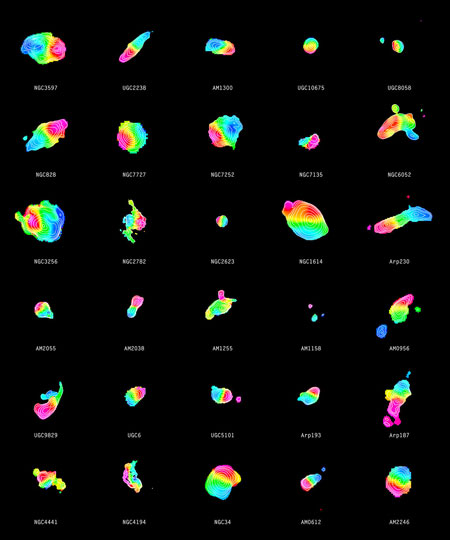 For decades scientists have believed that galaxy mergers usually result in the formation of elliptical galaxies. Now, for the the first time, researchers have found direct evidence that merging galaxies can instead form disc galaxies, and that this outcome is in fact quite common.
For decades scientists have believed that galaxy mergers usually result in the formation of elliptical galaxies. Now, for the the first time, researchers have found direct evidence that merging galaxies can instead form disc galaxies, and that this outcome is in fact quite common.
Sep 18th, 2014
Read more
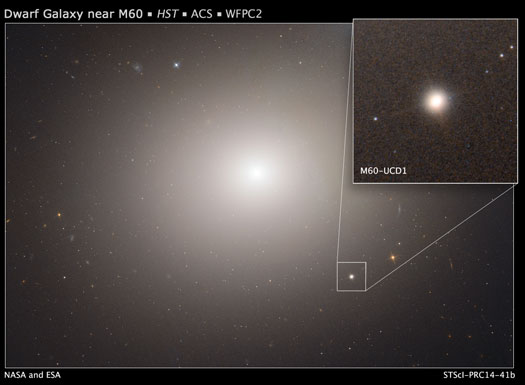 Astronomers have found an unlikely object in an improbable place: a monster black hole lurking inside one of the tiniest galaxies known.
Astronomers have found an unlikely object in an improbable place: a monster black hole lurking inside one of the tiniest galaxies known.
Sep 17th, 2014
Read more
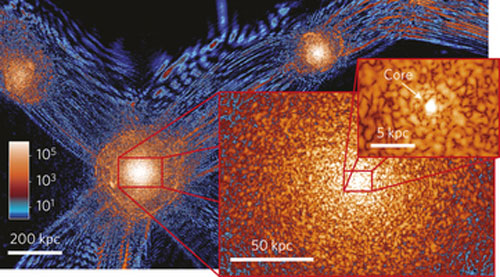 New research explores cold dark matter in depth and proposes new answers about the formation of galaxies and the structure of the universe. These predictions are being contrasted with fresh data provided by the Hubble space telescope.
New research explores cold dark matter in depth and proposes new answers about the formation of galaxies and the structure of the universe. These predictions are being contrasted with fresh data provided by the Hubble space telescope.
Sep 17th, 2014
Read more
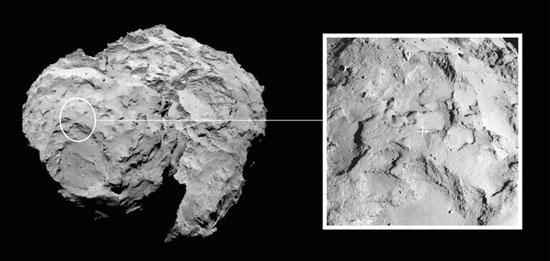 Rosetta's lander Philae will target Site J, an intriguing region on Comet 67P/Churyumov-Gerasimenko that offers unique scientific potential, with hints of activity nearby, and minimum risk to the lander compared to the other candidate sites.
Rosetta's lander Philae will target Site J, an intriguing region on Comet 67P/Churyumov-Gerasimenko that offers unique scientific potential, with hints of activity nearby, and minimum risk to the lander compared to the other candidate sites.
Sep 15th, 2014
Read more
A tiny fragment of Martian meteorite 1.3 billion years old is helping to make the case for the possibility of life on Mars, say scientists.
Sep 15th, 2014
Read more
Underscoring the vast differences between Earth and its neighbor Venus, new research shows a glimpse of giant holes in the electrically charged layer of the Venusian atmosphere, called the ionosphere. The observations point to a more complicated magnetic environment than previously thought - which in turn helps us better understand this neighboring, rocky planet.
Sep 12th, 2014
Read more
New findings of how giant elliptical galaxies move have been discovered by an international team of astronomers using the newly installed Multi Unit Spectroscopic Explorer (MUSE) at the European Southern Observatory's (ESO) Very Large Telescope (VLT) facility.
Sep 12th, 2014
Read more
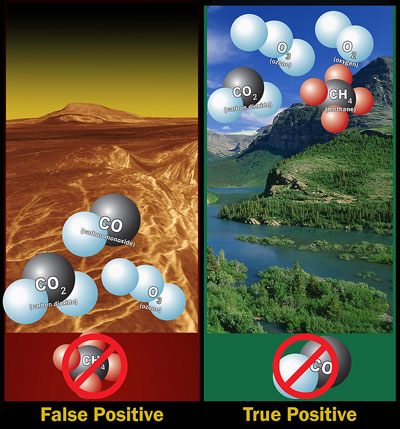 Astronomers searching the atmospheres of alien worlds for gases that might be produced by life can't rely on the detection of just one type, such as oxygen, ozone, or methane, because in some cases these gases can be produced non-biologically, according to extensive simulations by researchers in the NASA Astrobiology Institute's Virtual Planetary Laboratory.
Astronomers searching the atmospheres of alien worlds for gases that might be produced by life can't rely on the detection of just one type, such as oxygen, ozone, or methane, because in some cases these gases can be produced non-biologically, according to extensive simulations by researchers in the NASA Astrobiology Institute's Virtual Planetary Laboratory.
Sep 12th, 2014
Read more
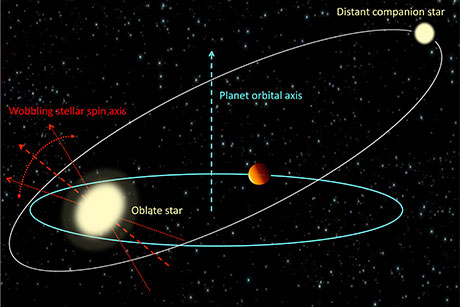 Blame the 'hot Jupiters'. These large, gaseous exoplanets can make their suns wobble after they wend their way through their own solar systems to snuggle up against their suns.
Blame the 'hot Jupiters'. These large, gaseous exoplanets can make their suns wobble after they wend their way through their own solar systems to snuggle up against their suns.
Sep 11th, 2014
Read more
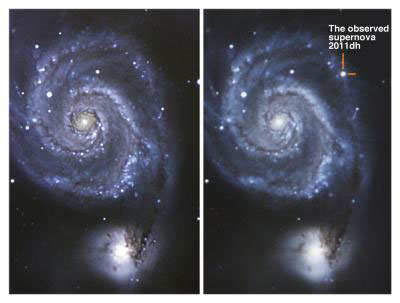 Astronomers have found evidence of a hot binary companion star to a yellow supergiant star, which had become a bright supernova. Its existence had been predicted by the team. This finding provides the last link in a chain of observations that have so far supported the team's theoretical picture for this supernova.
Astronomers have found evidence of a hot binary companion star to a yellow supergiant star, which had become a bright supernova. Its existence had been predicted by the team. This finding provides the last link in a chain of observations that have so far supported the team's theoretical picture for this supernova.
Sep 11th, 2014
Read more
The deputy chief of China's Manned Space Agency has announced an ambitious space program timetable building up to the country establishing its first space station around 2022.
Sep 11th, 2014
Read more
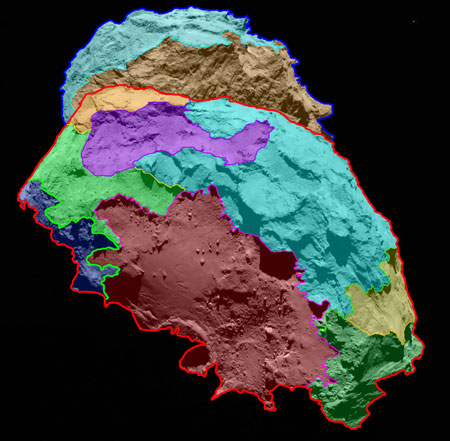 The surface of comet 67P/Churyumov-Gerasimenko can be divided into several morphologically different regions.
The surface of comet 67P/Churyumov-Gerasimenko can be divided into several morphologically different regions.
Sep 10th, 2014
Read more
Magnetic reconnection can trigger geomagnetic storms that disrupt cell phone service, damage satellites and black out power grids. But how reconnection, in which the magnetic field lines in plasma snap apart and violently reconnect, transforms magnetic energy into explosive particle energy remains a major unsolved problem in plasma astrophysics.
Sep 10th, 2014
Read more
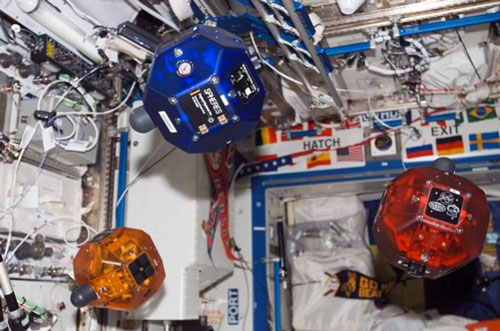 Algorithm tested aboard the International Space Station analyzes the rotation of objects in space.
Algorithm tested aboard the International Space Station analyzes the rotation of objects in space.
Sep 10th, 2014
Read more
A team of scientists has discovered the first evidence of water ice clouds on an object outside of our own Solar System. Water ice clouds exist on our own gas giant planets - Jupiter, Saturn, Uranus, and Neptune - but have not been seen outside of the planets orbiting our Sun until now.
Sep 9th, 2014
Read more
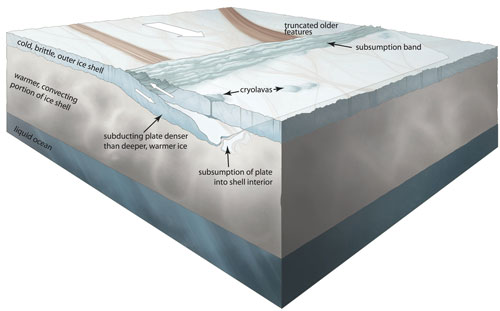 Scientists have found evidence of plate tectonics on Jupiter's moon Europa. This indicates the first sign of this type of surface-shifting geological activity on a world other than Earth.
Scientists have found evidence of plate tectonics on Jupiter's moon Europa. This indicates the first sign of this type of surface-shifting geological activity on a world other than Earth.
Sep 8th, 2014
Read more
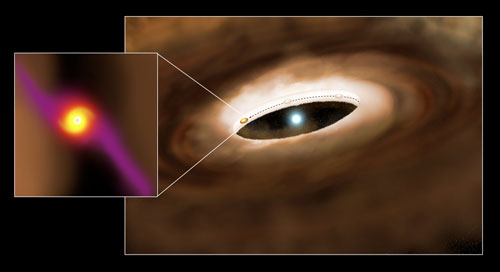 Astronomers have discovered what they believe is evidence of a planet forming around a star about 335 light years from Earth.
Astronomers have discovered what they believe is evidence of a planet forming around a star about 335 light years from Earth.
Sep 8th, 2014
Read more
 China has finished designing its first cargo spacecraft, which will ferry supplies and fuel to the nation's future multi-cabin, manned space station.
China has finished designing its first cargo spacecraft, which will ferry supplies and fuel to the nation's future multi-cabin, manned space station.
Sep 6th, 2014
Read more
 For decades scientists have believed that galaxy mergers usually result in the formation of elliptical galaxies. Now, for the the first time, researchers have found direct evidence that merging galaxies can instead form disc galaxies, and that this outcome is in fact quite common.
For decades scientists have believed that galaxy mergers usually result in the formation of elliptical galaxies. Now, for the the first time, researchers have found direct evidence that merging galaxies can instead form disc galaxies, and that this outcome is in fact quite common.
 Subscribe to our Space Exploration News feed
Subscribe to our Space Exploration News feed









